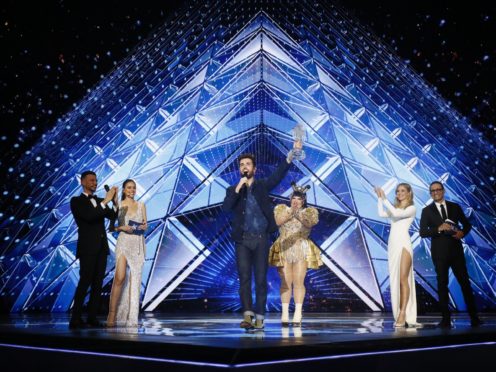This year’s Eurovision Song Contest winner eschewed pyrotechnics and complex staging in favour of a tried and tested formula: a well-crafted song performed with great emotion.
Duncan Laurence’s anthemic ballad Arcade won over the voting public and the international juries, securing 492 points.
The singer-songwriter and former contestant on The Voice Of Holland, 25, secured his nation its first Eurovision title since 1975, ensuring the contest will be held in the Netherlands next year.
🇳🇱 The winner of the Eurovision Song Contest 2019 is Duncan Laurence, representing The Netherlands with his song, Arcade!
👉 https://t.co/8ppA7om1Py@dunclaurence#DareToDream #Eurovision #NLD pic.twitter.com/iVduYXZY0y
— Eurovision (@Eurovision) May 18, 2019
Laurence was named front runner shortly after releasing the track – his debut effort as a musician – in March and remained the bookmakers’ favourite during the contest.
Some cast doubt on whether the stripped-back staging of just him, a piano and projections would connect with an international audience watching at home.
But those doubts turned out to be unfounded when he raced through Thursday’s semi-final and into Saturday night’s grand final.
Laurence started his musical career at the Rock Academy in Tilburg, Netherlands, graduating in 2017.
He participated in the fifth season of The Voice Of Holland and was coached by Ilse DeLange, before going on to pen the song Closer for K-pop duo TVXQ in 2018.
Earlier in the week he told the Press Association he thought he could win if he refused to compromise over his performance.
Asked why he thought he had been named front runner, he said: “It’s because I didn’t change a thing.
“I didn’t want to change anything for Eurovision. I just wanted the song to be the song – as it was originally written. You should never rush it or change things.
“The committee really went for the song as it is. I only wanted to participate if I could do my own song – Arcade – in the state as it is or was back then.”
